Books: Henrietta's Story and Joan Baez's Upside Down Drawings
Reviews of two books, a graphic novel about the writing process and a collection of upside down drawings by Joan Baez
I’ve always reviewed and included books on the Creativity Matters Podcast. I’ve shared some favorite children’s books through the years, for sure, especially in graphic novel or cartoon format.
These short book notes were part of my “Simply Sunday” post for June 18, 2023, but the post was long, so I moved them here as a standalone post.
Links are Amazon affiliate links, which helps support the CMP. I always encourage you to use your library and check books out.
Here are two from my stack this week:
Written and Drawn by Henrietta by Liniers
Am I Pretty When I Fly: An Album of Upside Down Drawings by Joan Baez
Henrietta and the Creative Process
Written and Drawn by Henrietta—This is a Toon Books title, and I’ve long been a fan of Toon Books. I talked about Otto's Orange Day long ago, all the way back in 2008 (and again in Episode 412 (2020)). That was an early Toon Books title.
Written and Drawn by Henrietta, by Liniers, is like a master course on writing (via drawing) disguised as a children’s story. The story opens with Henrietta having been given a box of pencils. The line, which I saw just hours after the rainbow hair mailing, made me smile:
“A box of colored pencils is as close as you can get to owning a piece of the rainbow.”
Henrietta gets to work writing and illustrating a story.
The scenes are drawn in two styles. We see the illustrator’s rendition of Henrietta as the writer and artist as she works through the steps of imagining and creating the story. She talks to her friends, Fellini the cat and a very attentive stuffed teddy, throughout the process. The story Henrietta is creating, on the other hand, is shown in bold colored pencil (which looks like what we might expect from crayon, but stands in here as Henrietta’s style.
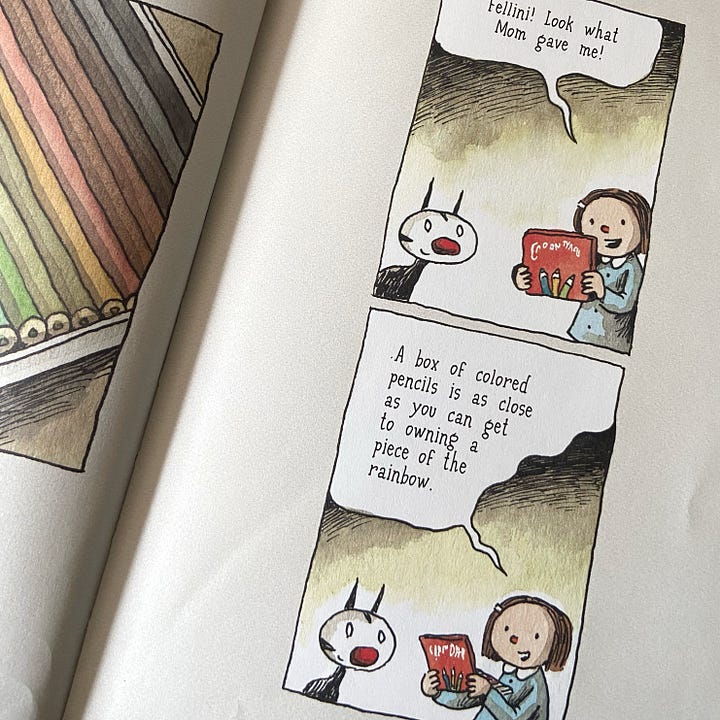
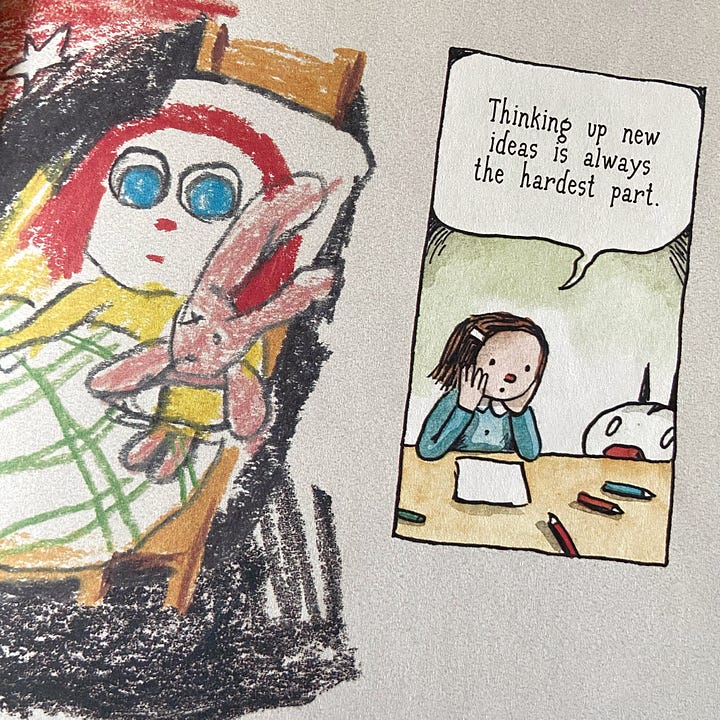
The juxtaposition of styles is fascinating and leads to an easy dual-layer narrative. Henrietta writes the title, gets the story started and gets caught up in the action, invested in what her character is experiencing. We see something “suddenly” happen, which she explains is a characteristic of a good story. We see her struggle over the plot development. “Thinking up new ideas is always the hardest part.” We see her draw from her own life (which the cat calls her on, although this is, of course, okay!).
We see her add suspense, and explain to her teddy that a three-dot ellipsis is an important technique. As the plot thickens, we watch as Henrietta wrestles with what will happen, with what she thinks her character will do and with how to resolve the story. Henrietta is clearly a pantser when it comes to narrative structure.
I loved it. I love the alternating styles. I love that she talks through the writing process with Fellini and the teddy. She finishes the story, satisfied with a happy ending, and does what a good author probably should do.
“That’s it…. Now let’s go look for a publisher.”
If you are around children, grab this from your library. It’s short but fun. Be sure and pair it with a pad of paper and a fresh box of crayons (or colored pencils).
Two other titles by Liniers:
(I ran into this article on the Toon Book site while preparing my notes. I was trying to confirm that the Otto book was, in fact, an early title for the publisher and landed on a page specifically about Liners!)
Upside Down Contour Drawings
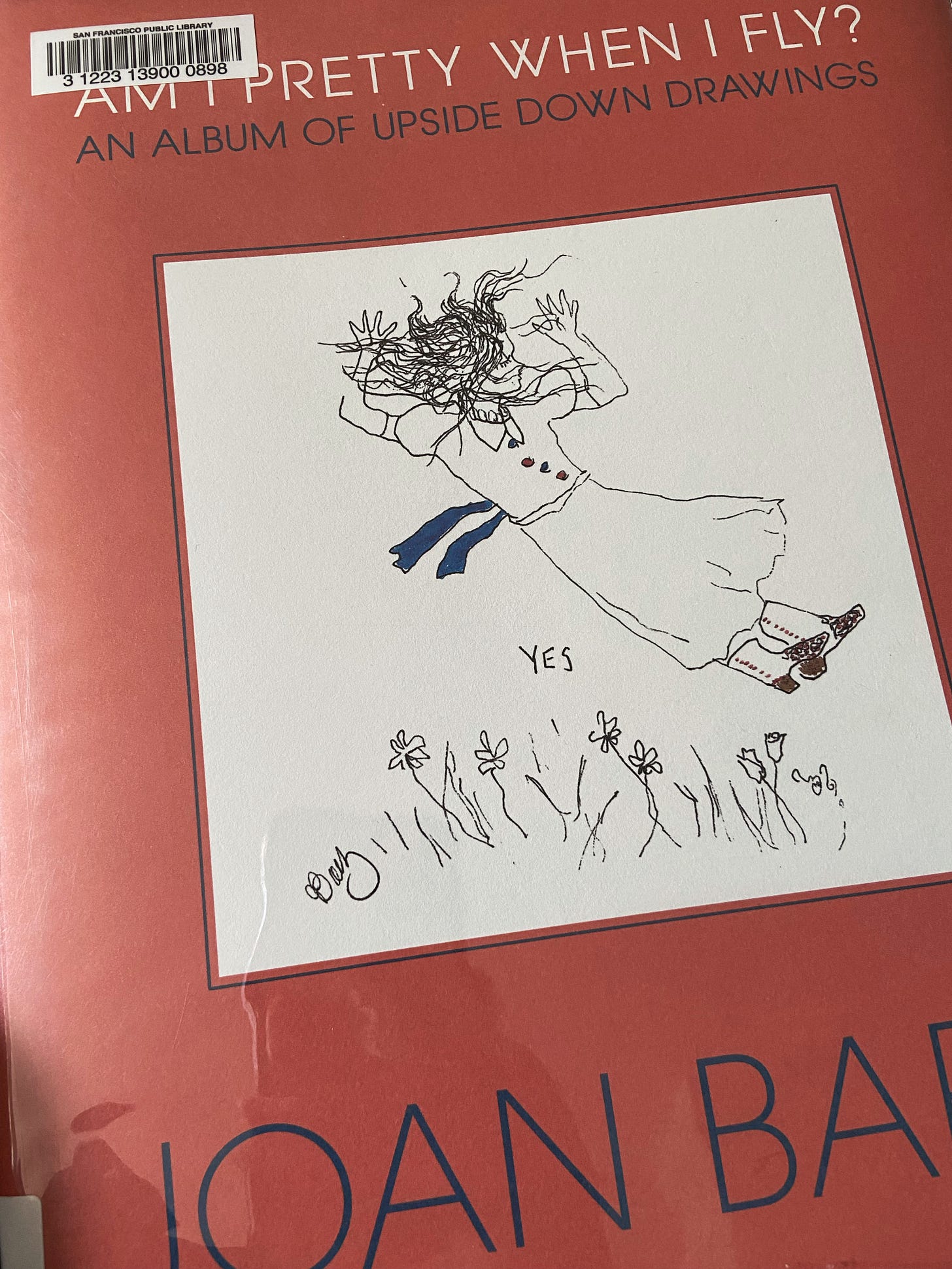
Am I Pretty When I Fly: An Album of Upside Down Drawings by Joan Baez—This collection was mentioned to me by Emily, someone who draws with me on some weekends, specifically in the context of contour drawings. (This book was also the focus of a recent post from Austin Kleon.)
Am I Pretty When I Fly is a collection of drawings by Joan Baez. These drawings are unusual in that they were all drawn upside down.
Drawing upside down is an approach many people I know take and advocate. You can find this come up in a range of places, but certainly in Drawing on the Right Side of the Brain by Betty Edwards. In my weekend group, there are several people who do their drawings upside down, usually informed more contemporarily by Charlotte Hamilton (BlueShineArt) who often advocates this approach.
I’m not an upside down drawing person, but I enjoyed looking at the whimsical line of art in this book. If you think you know what upside drawing means, you’ll want to think again. What upside down drawing means in this book is, I think, a bit unusual.
As is often the case, I especially enjoyed the biographical introduction from Baez about her history as an artist, tracking her work from childhood through adulthood.
“Decades later, as an adult, I dabbled more with color. I worked with chalk, crayons, charcoal, pastels, watercolors, markers, and colored ink, and I used brushes, fingers, hands, all in my own deliciously undisciplined fashion. When I was in my seventies, I had a burgeoning—soon to be overwhelming—desire to use ‘real’ paints. I assumed that would mean oils. But a local artist introduced me to acrylics, with which, at the time of this writing, I’ve now had a ten-year affair. I began with collages and worked in my kitchen on heavy, all-purpose art paper until the table was no more than a makeshift studio with no place left to put so much as a coffee mug.” (xiii)
She then describes moving on to painting portraits.
But this book is about her upside down drawings, which appears to be imagination based. She talks about the series of processes that led to her upside down work, like writing backwards. And then she describes how she draws something upside down. It took me a bit to wrap my head around what she describes, but once you realize that she’s drawing from imagination, and doing the drawing upside down, you can see how it works.
“I start moving my pen or pencil around upside down on the paper— napkin, tablecloth, scrap—as though the drawing is being made for someone sitting opposite me at the table. Sometimes I have an idea of what I want to draw, but often I just let the pen or pencil start swooping around the page."
What is interesting is the thread of discovery that happens. She is drawing something, whatever comes to mind, and after she turns it right side up, she pairs it with words or other illustrations to complete it.
"Once I start to see what’s developing, I begin embellishing, often adding randomly the human form, a floating fish, a flower. Eventually, I turn the drawing right-side up and see if it needs anything to make it feel complete, in which case I reverse it again and add bits and pieces. Back right-side up again and the real magic happens: I listen for what the drawing says to me. When a phrase (usually a pun) comes to my mind and resonates, I turn the paper one more time and write the phrase upside down.”
I found the collection fascinating to look through.
“We don’t need an explanation for every damn thing. There’s a lot to be said for letting go and doing something simply if it feels right.”
Try drawing something from your imagination and drawing it upside down. This process still puzzles me!
If you have an interest in contour drawings (and there are all kinds of ways to do it despite the concept itself being simple) or in turning traditional drawing on its head, pull this from your library.
Thank you for reading the Illustrated Life substack. Please consider subscribing (for free) to receive the weekly email. Paid options are available for those who want to support the substack, the podcast, and #illustrateyourweek. Subscriptions not your thing? One-time donations are always appreciated.
(Please note: Links to books or tools referenced in posts are Amazon affiliate links that help support these projects.)





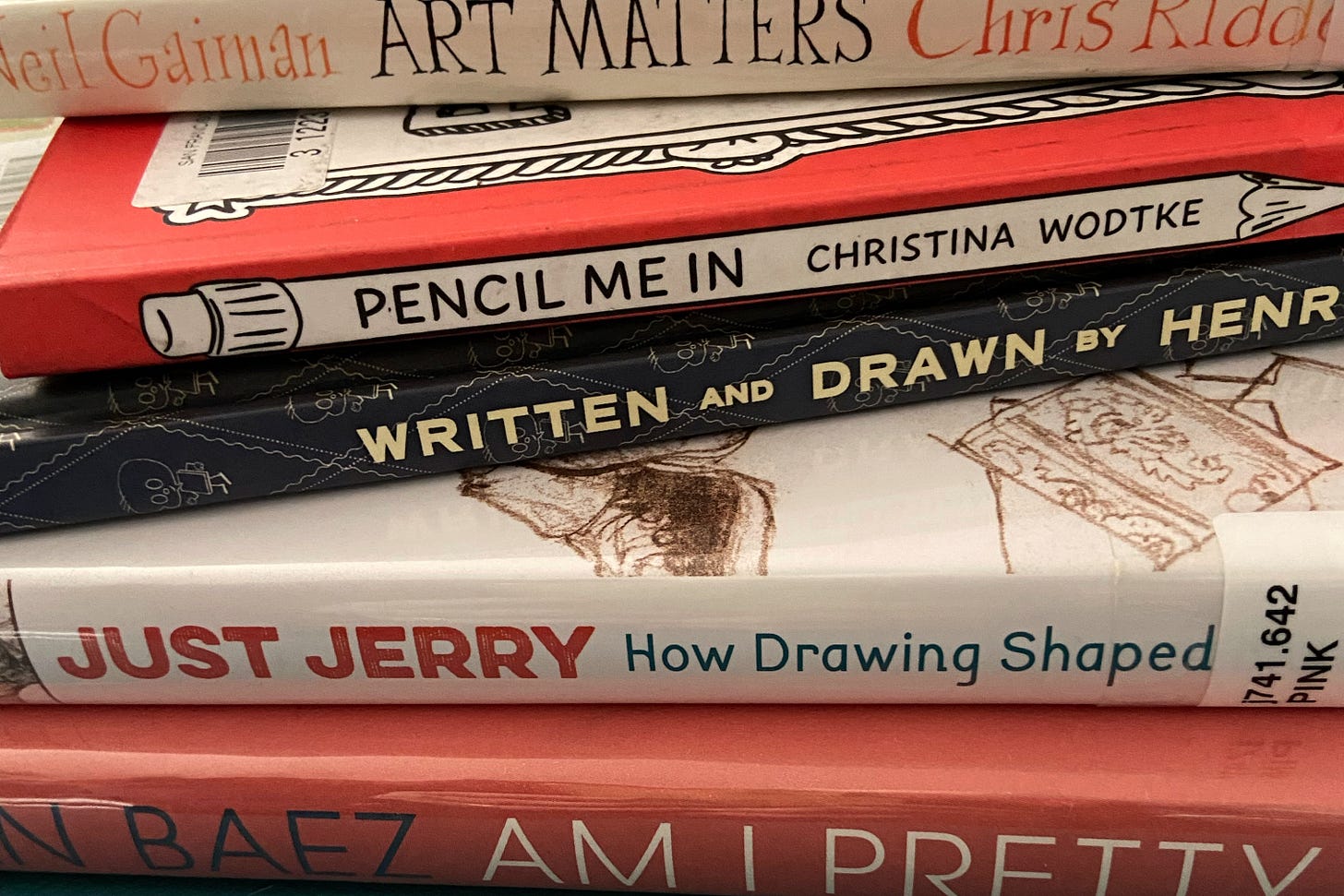
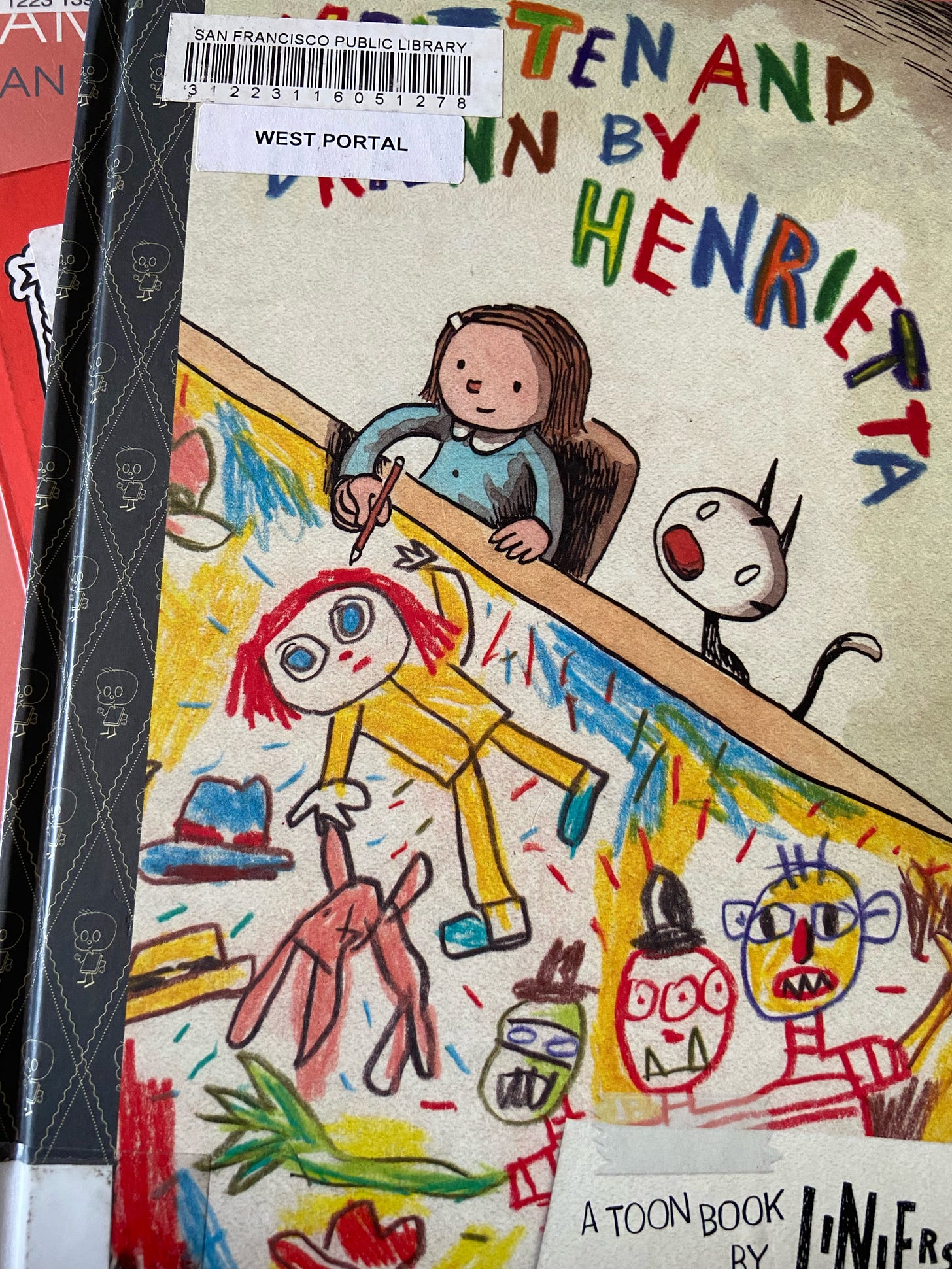
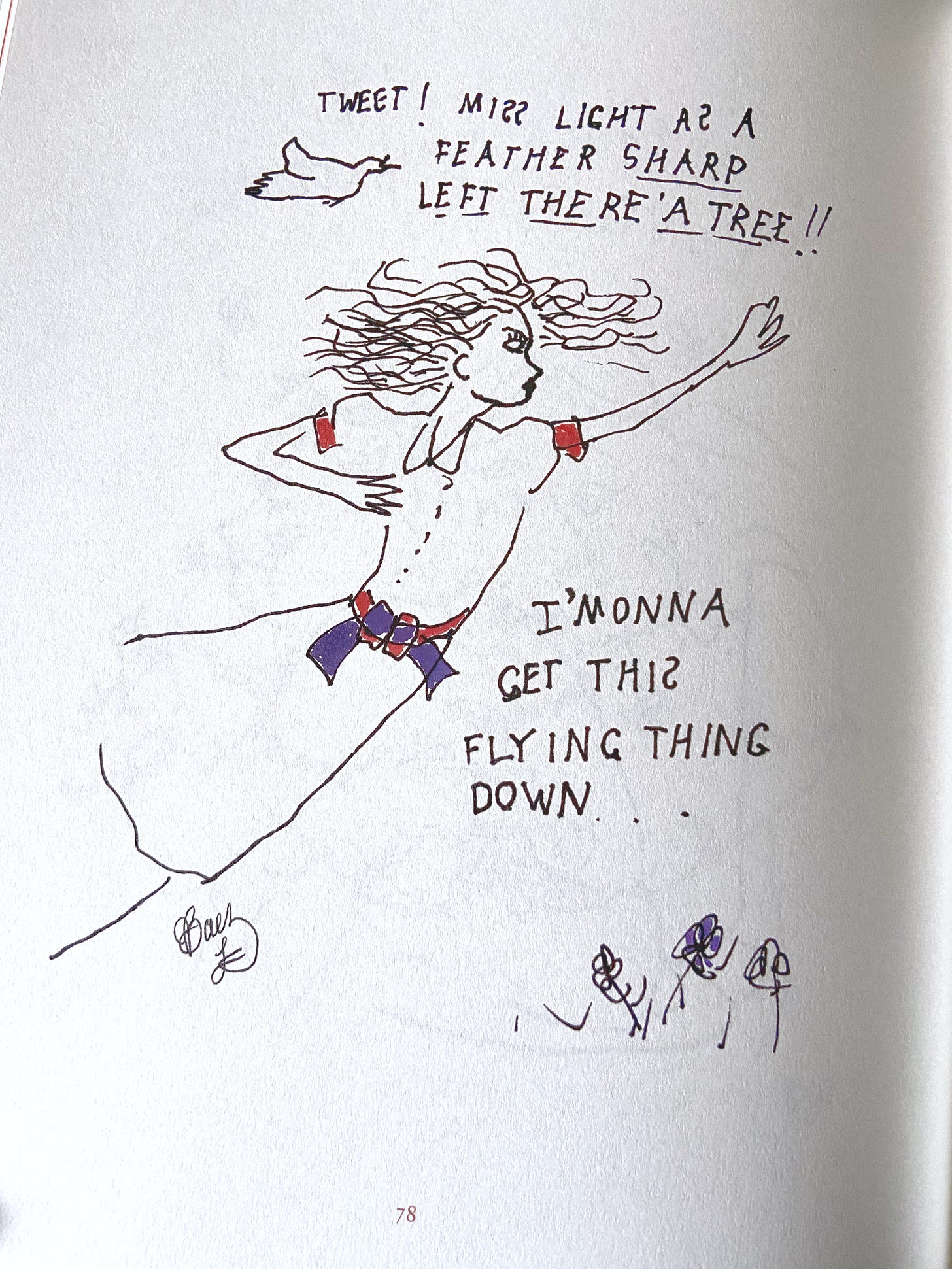
Ooooh, I am definitely going to look for these in my library, they both sound amazing!!!
So glad you had a chance to get this from your library both of these and read them and share them with us! I'm still waiting for my copy of Joan Baez's book.